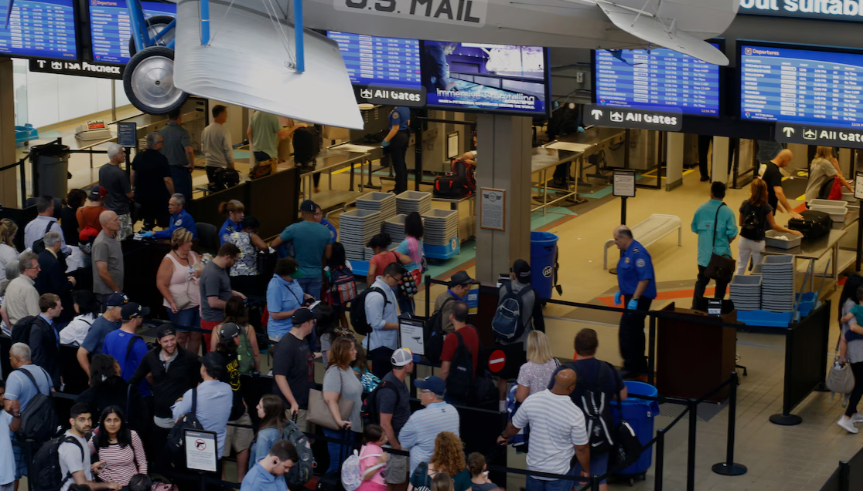As the long-awaited May 7 deadline for REAL ID enforcement arrives, millions of Americans are once again facing confusion, uncertainty, and potential travel delays—all thanks to a rollout marred by poor communication, weak planning, and bureaucratic dysfunction.
Although Homeland Security previously warned that starting May 7, 2025, travelers would need a REAL ID or another federally compliant form of identification to board domestic flights, officials are now pulling back—at the last minute. During a congressional hearing on Tuesday, Homeland Security Secretary Kristi Noem told lawmakers that travelers without a REAL ID will still be allowed to fly—just with added screening.
“What will happen tomorrow is folks will come through the line and show [their ID],” Noem explained. “If it’s not compliant, they may be diverted to a different line, have an extra step, but people will be allowed to fly.”
This stunning reversal has left many asking: after nearly two decades of preparation, what was the point?
The Reality Behind REAL ID
The REAL ID Act was passed in 2005 following the 9/11 Commission’s recommendations. Its goal was to strengthen national security by standardizing state-issued identification. However, its implementation has been delayed multiple times under both Democratic and Republican administrations—including President Joe Biden’s decision to extend enforcement to May 7, 2025.
Now, as the date arrives, the rollout appears to be unraveling.
According to Homeland Security, approximately 81% of U.S. travelers currently possess a REAL ID-compliant document, which typically includes a black or gold star in the upper right corner of the license. Other accepted forms of ID include U.S. passports, Department of Defense IDs, Global Entry cards, and green cards.
Travelers who arrive at the airport without one of these documents won’t be banned from flying—but they will face additional screening, delays, and possibly missed flights.
“We will make sure it’s as seamless as possible,” Noem claimed, although past government handling of airport security suggests otherwise.
Mounting Frustration, Few Solutions
Despite years of public awareness campaigns, many Americans remain unclear about the requirements. That’s not surprising—because the rules keep changing.
To obtain a REAL ID, applicants must present multiple documents, including proof of full legal name and date of birth, proof of U.S. residency such as a utility bill or lease, and proof of legal presence, such as a birth certificate or passport. It’s a time-consuming process for a document that might not even be required for another year—or possibly longer.
Meanwhile, other more pressing aviation safety concerns have been ignored. Just last week, air traffic controllers briefly lost radar and radio contact with aircraft headed to Newark Liberty International Airport, causing widespread delays and cancellations. Yet the Trump administration—under which REAL ID enforcement is being pushed—has failed to present a coherent plan to modernize or stabilize the U.S. air traffic control system.
Instead, it continues to focus on performative security measures like REAL ID, with no evidence they make Americans safer.
Critics Warn of National ID System and Privacy Violations
Civil rights organizations have long raised concerns about the REAL ID program, warning that it could lead to the creation of a de facto national identification system. States participating in the program must share data with federal agencies, raising serious privacy and civil liberties concerns.
For many Americans, the REAL ID feels like another intrusive government mandate with minimal benefits and maximum inconvenience. And with Noem refusing to commit to a new deadline for full enforcement, travelers and state DMVs remain stuck in limbo.
Adding to the confusion, the TSA is now recommending that travelers using only a standard driver’s license arrive at airports an hour earlier than usual—just in case the rules suddenly change.
A System Designed to Fail?
The REAL ID program has cost billions, confused the public, and failed to deliver on its central promise of increased security. It’s a government rollout that reflects the very worst of bureaucracy—delayed deadlines, unclear messaging, inconsistent enforcement, and no measurable improvement in safety.
For the traveling public, the result is more red tape, longer lines, and no end in sight.



